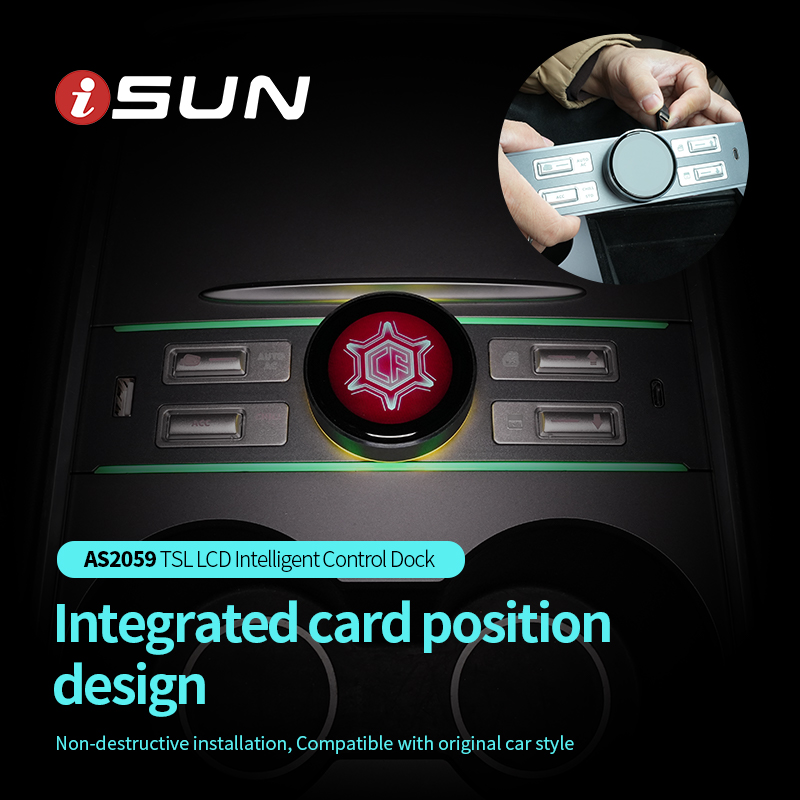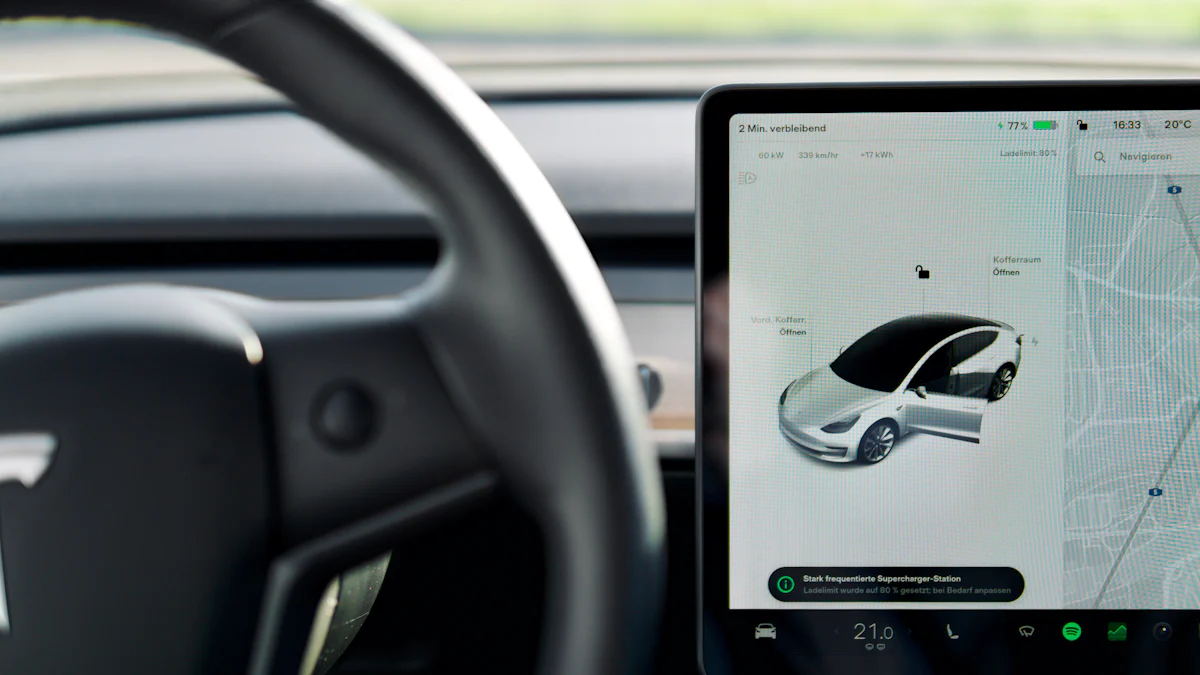Never Miss Data: Tesla USB Hub Tips for 2024

Efficient data management is crucial in Tesla vehicles, as they gather terabytes of data every day to enhance Autopilot and FSD systems. The Tesla Model Y is particularly notable for its USB hub capabilities. You can utilize the USB for Tesla Model Y to connect a range of devices effortlessly. This blog will provide guidance on how to view instrument display data via Tesla USB Hub effectively. Proper data handling ensures that you never overlook essential information while driving your Tesla.
Understanding Tesla Model Y USB Ports
Types of USB Ports
USB-A Ports
The Tesla Model Y features a USB-A port inside the glovebox. This port is perfect for data transfer tasks. You can use it to store Sentry Mode and Dashcam footage. The USB-A port ensures that your important data stays secure. You might find this port useful for connecting older devices that still rely on USB-A connections.
USB-C Ports
The Tesla Model Y comes equipped with multiple USB-C ports. Two USB-C ports are located in the front compartment. Another two USB-C ports sit in the rear compartment under the vents. These ports offer faster data transfer speeds. You can charge modern devices more efficiently with USB-C ports. The design of these ports supports the latest technology trends.
Functions of Each Port
Charging Capabilities
Tesla's USB ports provide excellent charging capabilities. The USB-C ports, in particular, offer rapid charging for compatible devices. You can keep your smartphones and tablets powered up during long drives. The USB-A port also supports charging, though at a slower rate. You might prefer using USB-C ports for quicker charging needs.
Data Transfer Functions
Data transfer is a key function of Tesla's USB ports. The USB-A port in the glovebox handles data storage tasks. You can save video footage from the Dashcam and Sentry Mode here. The USB-C ports support data transfer as well. You can connect devices that require fast data exchange. A reliable USB hub like the Jeda USB Hub can expand your connectivity options. This hub adds additional USB-A and USB-C ports, enhancing your vehicle's functionality.
Tips for Using a USB Hub with Tesla Model Y
Choosing the Right USB Hub
Compatibility Considerations
Selecting the right USB hub for your Tesla Model Y can feel overwhelming. You need to ensure compatibility with the car's USB ports. The Tesla Model Y features both USB-A and USB-C ports, so look for a hub that supports these types. An unpowered USB hub is recommended to avoid any power issues. This choice helps maintain the functionality of connected devices.
Recommended USB Hubs
You might wonder which USB hubs work best with your Tesla Model Y. The Jeda USB Hub stands out as a top choice. It transforms two USB ports into five, offering three USB-A and two USB-C ports. This hub enhances your vehicle's connectivity options. Another great option is the Tesloid USB Hub. This hub offers a 4-in-1 port setup, including Type C for fast charging and USB 3.0 for power and data. These hubs provide excellent value and expand your port options.
Best Practices for Data Integrity
Proper Setup and Installation
Proper setup and installation of your USB hub ensure smooth operation. Start by connecting the hub to the appropriate USB port in your Tesla Model Y. Make sure the hub fits securely and does not obstruct any other functions. A stable connection prevents data loss during transfers. Follow the manufacturer's instructions for the best results.
Regular Data Backups
Regular data backups protect your valuable information. Use the USB hub to connect a storage device for backup purposes. Save important files like Dashcam and Sentry Mode footage regularly. This practice ensures you have access to crucial data when needed. Backup routines help prevent data loss in case of unexpected issues.
Troubleshooting Common USB Hub Issues
USB Drive Recognition Problems
Causes of Recognition Issues
Ever tried plugging in a USB drive and nothing happens? Frustrating, right? Several factors can cause this issue. A common reason is an incompatible file system on the USB drive. Tesla vehicles prefer FAT32 or exFAT formats. An unsupported format might prevent recognition. Another culprit could be a faulty USB hub. Some hubs draw too much power, disrupting the connection. Also, a loose connection can lead to recognition problems. Ensure the USB drive fits snugly into the port.
Solutions and Fixes
Let's fix those recognition issues. First, check the file system on your USB drive. Reformat it to FAT32 or exFAT if needed. Remember, reformatting erases all data, so back up important files first. Next, inspect your USB hub. Use an unpowered hub to avoid power-related issues. The Jeda USB Hub offers a reliable solution with its seamless integration. If the problem persists, try connecting the USB drive directly to the port. This step helps identify if the hub causes the issue. Lastly, ensure a secure connection by firmly inserting the drive.
Data Transfer Errors
Identifying Transfer Errors
Data transfer errors can disrupt your plans. Recognizing these errors early helps in quick resolution. You might notice incomplete file transfers or corrupted files. Slow transfer speeds can also indicate a problem. These issues often arise from a faulty USB hub or cable. An incompatible device might also cause errors. Identifying the root cause is crucial for effective troubleshooting.
Steps to Resolve Errors
Ready to tackle those data transfer errors? Start by checking your USB hub and cables. Replace any damaged or low-quality components. The Tesloid USB Hub offers robust connectivity options. This hub ensures smooth data transfers. Next, verify the compatibility of connected devices. Ensure all devices support the required data transfer protocols. If errors persist, try a different USB port. Sometimes, a simple change in port solves the problem. Regularly update your Tesla's software to benefit from the latest fixes and improvements.
View Instrument Display Data via Tesla USB Hub

Accessing Data through USB for Tesla Model Y
Want to view instrument display data using the USB for Tesla Model Y? Let's dive into the steps. First, ensure a compatible USB drive is ready. Insert the USB drive into the glovebox USB-A port. This port handles data transfer efficiently. Next, navigate to the touchscreen interface. Select the 'Media Player' option. The interface will display the connected USB drive. Choose the desired data files to view. The process is straightforward and user-friendly.
Troubleshooting Display Issues
Encountering display issues can be frustrating. Let's tackle these problems head-on. First, check the file format on the USB drive. Tesla vehicles prefer FAT32 or exFAT formats. An incompatible format might cause display issues. Reformat the drive if necessary. Remember to back up important data before reformatting. Next, inspect the USB hub connection. A loose connection can disrupt data access. Ensure the hub fits securely in the port. The Jeda USB Hub offers a reliable solution with its seamless integration. If issues persist, try a different USB port. Sometimes, a simple change in port resolves the problem. Regularly update Tesla's software for optimal performance. Updates often include fixes for known issues.
You now have the tools to manage data efficiently in your Tesla Model Y. Following these tips ensures that you never miss crucial information. A reliable USB hub enhances your vehicle's connectivity and keeps your console tidy. Customer reviews highlight the hub's ability to handle multiple devices seamlessly. You can enjoy a stylish and practical accessory for your Tesla. Implement these strategies for optimal data management and enjoy a smooth driving experience. Your Tesla deserves the best, and so do you.
See Also
Helpful Advice from iSun Manufacturer for Caring Your Smart Key
Top Forum for Car Key Auto Lock Solutions by iSun Manufacturer
The Importance of Having isun Manufacturer's Smart Key as Backup
Understanding the Reasons Behind Car Key Sticking in Ignition by isun Manufacturer
Top-notch Local Service for Car Key Battery Replacement by isun Manufacturer
iSun Digitech Limited
Contact : Coco Huang
E-mail: sales@iasun.cn

